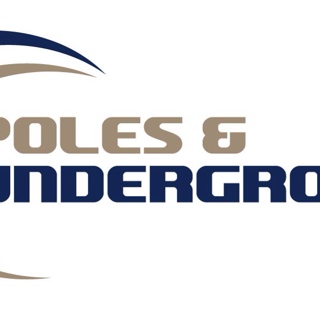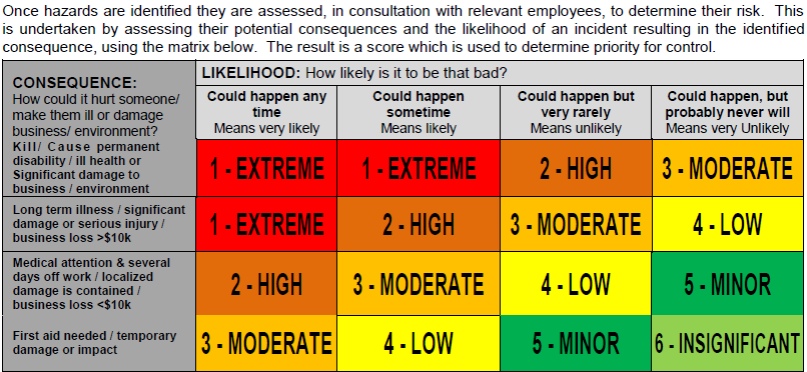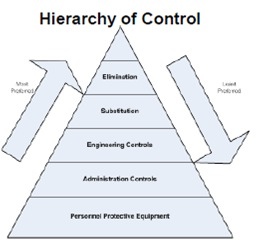Information
-
Project No.
-
Location
-
Supervisor:
- Kristian Arnold
- Scott Brodie
- Duncan Brown
- Glenn Brown
- Daniel Cahill
- John Calleja
- Tony Cassanianca
- Drue Eding
- Heath Elton
- Ken Grimmitt
- Glen Mackenzie
- Luke Moir
- Grant Organ
- Tim Palmer
- Paul Vikis
- Lachlan Sampson
- Colin Whitbread
- Ryan Wooden
- Peter Booth
- Colin Carroll
- Warren Hay
- Steve Brown
- Chris Gilmore
- Jamie Moore
- Greg Douglas
-
Date & time.
-
Project Title
-
Client / Site
-
Personnel
- Kristian Arnold
- Scott Brodie
- Duncan Brown
- Glenn Brown
- Daniel Cahill
- John Calleja
- Tony Cassanianca
- Drue Eding
- Heath Elton
- Ken Grimmitt
- Glen Mackenzie
- Luke Moir
- Grant Organ
- Tim Palmer
- Paul Vikis
- Lachlan Sampson
- Colin Whitbread
- Ryan Wooden
- Peter Booth
- Colin Carroll
- Warren Hay
- Steve Brown
- Chris Gilmore
- Jamie Moore
- Greg Douglas
-
NOTE:
1 - No use of ID Spike Guns permitted - refer to SWMS
2 - HV Test/Fault locations are undertaken by network owner - ensure SWMS in place.
Preliminary
THIS DOCUMENT MUST BE COMPLETED EVERYDAY - GET EVERYONE INVOLVED - EVERYONE SIGNS ON BEFORE WORK STARTS
-
Emergency muster point
-
Everyone must have been inducted with the SWMS - must understand and sign them all. All SWMS controls must be implemented - all changes to be PM/Client approved.
-
Today's SWMS No's
-
A brief description of the work being undertaken today (include as much detail as possible).
-
Risk Matrix
Key Start-up Checklist
-
Select yes or no for each item. If it is a "Yes" then you must expand the item and add comments.
-
Risk Matrix
Key Start-up Checklist
-
1. Check all staff on this site have been inducted to site? Does everyone know what they are responsible for?
-
2. Check all staff performing the work are authorised to undertake their tasks & supervision is provided for trainees and contractors.
-
3. If traffic, pedestrian or public access controls are required, check 3rd party controllers have a documented plan (discuss it here).
-
4. Are additional controls required if/when the site is left unattended.
-
5. Plant, tools and equipment (including hire equipment):<br> - Portable electrical equipment has been tested and tagged?<br> - All plant checklists completed?<br> - maintained in suitable condition (fit for purpose)?
-
6. Check if there are trip hazards, obstacles (e.g trees) or excavations present at the worksite. If "Yes" discuss controls.
-
7. Check if environmental hazards are present, if so which ones?
-
Sediment
-
Chemicals/Fuel
-
Waste
-
Bush Fire
-
Asbestos
-
Cultural Site
-
Historical site
-
SF6 Gas
-
Controls.
-
8. Check if there are any alternate sources of supply that could inadvertently energise the mains or apparatus on the work site.
-
9. Check for house keeping issues on site that need to be addressed, assign responsibilities.
-
10. Check if any of today's activities are "high risk" and require Permits to Work. Who will ensure they are in place.
Additional checks for testing/commissioning/cable ID
-
Is testing, commissioning or cable identification required?
-
1. Can the cable/apparatus that the task is to be undertaken on be positively identified?
-
2. Is the testing party in possession of all the relevant paperwork required to undertake testing?
-
3. Has the voltage been confirmed on the cable/apparatus to be tested?
-
4. Has signage, barricading or Safety Observer been put in place to maintain exclusion zones?
-
5. Can all the testing/commissioning to be performed on the worksite be identified?
-
Phase sequence.
-
Phasing.
-
Voltage check.
-
Insulation resistance.
-
Earth resistance.
-
6. Are overhead mains being replaced or bonds being broken?
-
Who are the 2 nominated to draw phasing diagrams? Must be the 2 most senior on site.
-
Phasing diagram.
Task Assessment
Task Assessment and Controls
-
1. Apart from mandatory PPE is additional PPE required? If so which ones?
-
Risk rating prior to controls
- 1-Extreme
- 2-High
- 3-Moderate
- 4-Low
- 5-Minor
- 6-Insignificant
-
Identify Hazard Controls Required
- Traffic Vests
- Hard Hat
- Protective Gloves
- Eye Protection
- Ear Protection
- Fall Arrest Harness
-
Residual Risk Rating with controls in place.
- 1-Extreme
- 2-High
- 3-Moderate
- 4-Low
- 5-Minor
- 6-Insignificant
-
2. Will the work party be affected by climatic conditions? If so what controls will be used?
-
Risk rating prior to controls
- 1-Extreme
- 2-High
- 3-Moderate
- 4-Low
- 5-Minor
- 6-Insignificant
-
Identify Hazard controls required.
- Sunscreen
- Wide brim hat
- Cool water intake
- Rest Breaks
- Wet weather PPE
- Warm clothing
- Shade equipment
-
Residual Risk Rating with controls in place.
- 1-Extreme
- 2-High
- 3-Moderate
- 4-Low
- 5-Minor
- 6-Insignificant
-
3. Are manual handling tasks involved? If so what control measures will be used?
-
Risk rating prior to controls
- 1-Extreme
- 2-High
- 3-Moderate
- 4-Low
- 5-Minor
- 6-Insignificant
-
Identify Hazard controls required.
- 2 man lift
- Mechanical aids
- Correct technique
- Unrestrictive work position
-
Residual Risk Rating with controls in place.
- 1-Extreme
- 2-High
- 3-Moderate
- 4-Low
- 5-Minor
- 6-Insignificant
-
4. Are there existing assets on the worksite? Have they been identified and located? By what method?
-
Risk rating prior to controls
- 1-Extreme
- 2-High
- 3-Moderate
- 4-Low
- 5-Minor
- 6-Insignificant
-
Identify Hazard controls required.
- Dial B4 You Dig
- Potholing
- Locator
- Dedicated spotter required/nominated
-
Residual Risk Rating with controls in place.
- 1-Extreme
- 2-High
- 3-Moderate
- 4-Low
- 5-Minor
- 6-Insignificant
-
5. Are poles required to be checked? If yes what method/s will be used?
-
Risk rating prior to controls
- 1-Extreme
- 2-High
- 3-Moderate
- 4-Low
- 5-Minor
- 6-Insignificant
-
Identify Hazard controls required.
- Visual
- Sounding
- Rope Test
-
Residual Risk Rating with controls in place.
- 1-Extreme
- 2-High
- 3-Moderate
- 4-Low
- 5-Minor
- 6-Insignificant
-
6. Are staff required to work above 2 metres?
-
Risk rating prior to controls
- 1-Extreme
- 2-High
- 3-Moderate
- 4-Low
- 5-Minor
- 6-Insignificant
-
Identify Hazard controls required.
- Fall arrest climbing system
- Ladder secured
- EWP
- Rescue kit
-
Residual Risk Rating with controls in place.
- 1-Extreme
- 2-High
- 3-Moderate
- 4-Low
- 5-Minor
- 6-Insignificant
-
7. Is a EWP or crane to be used at this site?
-
Risk rating prior to controls
- 1-Extreme
- 2-High
- 3-Moderate
- 4-Low
- 5-Minor
- 6-Insignificant
-
Identify Hazard controls required.
- Stable footing
- Adequate clearances
- Spotter
-
Residual Risk Rating with controls in place.
- 1-Extreme
- 2-High
- 3-Moderate
- 4-Low
- 5-Minor
- 6-Insignificant
-
8. Is a safety observer required? Limit of approach LV or HV.
-
Name of Safety Observer.
-
Minimum safe approach distance.
-
9. Are all mains/apparatus identified as live or de-energised?
-
Risk rating prior to controls
- 1-Extreme
- 2-High
- 3-Moderate
- 4-Low
- 5-Minor
- 6-Insignificant
-
Identify Hazard controls required.
- HV - Live
- HV - De-energised
- LV - Live
- LV - De-energised
-
Residual Risk Rating with controls in place.
- 1-Extreme
- 2-High
- 3-Moderate
- 4-Low
- 5-Minor
- 6-Insignificant
-
10. When working on or near live or de-energised electrical apparatus, are any of these control measures required? (Pick from selection)
- Switching instruction
- Access permit
- Earthing
- Bonding
- Safety observer
- Insulating Gloves
- Insulating mat/covers
- Insulated tools
- Adequate size joint hole
Sign on sheet
-
Any additional hazard / control measures
-
Hierarchy of Control
All staff on the site are to participate and acknowledge this assessment.
STOP & THINK 'SAFETY FIRST' BEFORE YOU START EACH TASK TODAY DON'T TAKE SHORTCUTS, TALK TO EACH OTHER WE WANT ZERO HARM -> BUT IF YOU DO GET IT WRONG REPOT IT
-
P&U Staff Sign On
Name
-
P&U Staff Name
- Kristian Arnold
- Scott Brodie
- Duncan Brown
- Glenn Brown
- Daniel Cahill
- John Calleja
- Tony Cassanianca
- Drue Eding
- Heath Elton
- Ken Grimmitt
- Glen Mackenzie
- Luke Moir
- Grant Organ
- Tim Palmer
- Paul Vikis
- Lachlan Sampson
- Colin Whitbread
- Ryan Wooden
- Peter Booth
- Colin Carroll
- Warren Hay
- Steve Brown
- Chris Gilmore
- Jamie Moore
- Greg Douglas
-
Time on
-
Sign on
-
Time off.
-
Sign off
















